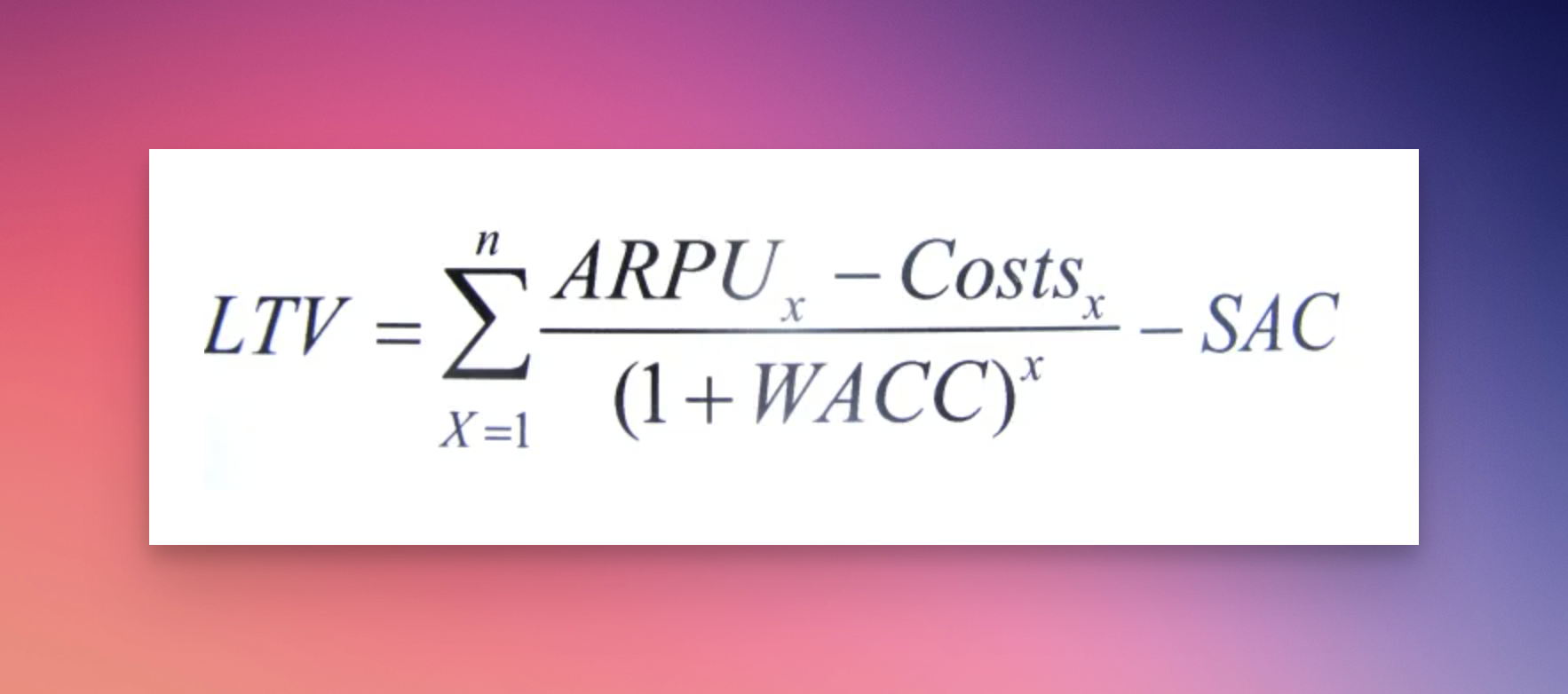A simpler LTV (Life Time Value)
Recently I had to answer some data questions around our ideal customer so I needed a way to calculate LTV. In the past I've done my fair share of heavy data lifting to get the most accurate value of Life Time Value.

Alternatively we've used platforms like Baremetrics or ChartMogul to do the math for us. But reality is that we don't obsess over those numbers and just don't look at them enough to account for the cost.
Lacking the data
In our case, calculating lifetime value (LTV) per account is difficult because we don't store historical subscription data. We use Stripe for the bulk of the work, so we mostly just keep track of the current active subscriptions and don't store information about past changes in subscription for each customer.
Additionally we don't have the best insight in Subscribed Acquisition Cost (or CAC) per channel. And even if we did that starts the whole conversation about marketing attribution.
A lot of reasons why we just don't have the best view on our customer Lifetime Value.
A much simpler way
What we do have in our database is a list of all invoices (and credit notes) synced to a single table. It has the history of every outgoing invoice spanning multiple billing systems from something self-built, Xero all the way to Stripe.
The invoices table is looks a little like this where every invoice has a period and is linked to a customer in the customer table.

To get an approximation of Life Time Value I did nothing more than summing up all the invoices per customer which presented me with a pretty good understanding of who are our most valueable customers.
I know this calculation doesn't look ahead and underestimates the LTV. But it did the job of comparing the most valuable customers. Plus, LTV isn't always the perfect solution either.
Some people wield the LTV model as if they were Yoda with a light saber; “Look at this amazing weapon I know how to use!” Unfortunately, it is not that amazing, it’s not that unique to understand, and it is not a weapon, it’s a tool. Companies need a sustainable competitive advantage that is independent of their variable marketing campaigns. You can’t win a fight with a measuring tape.
From: The Dangerous Seduction of LTV.